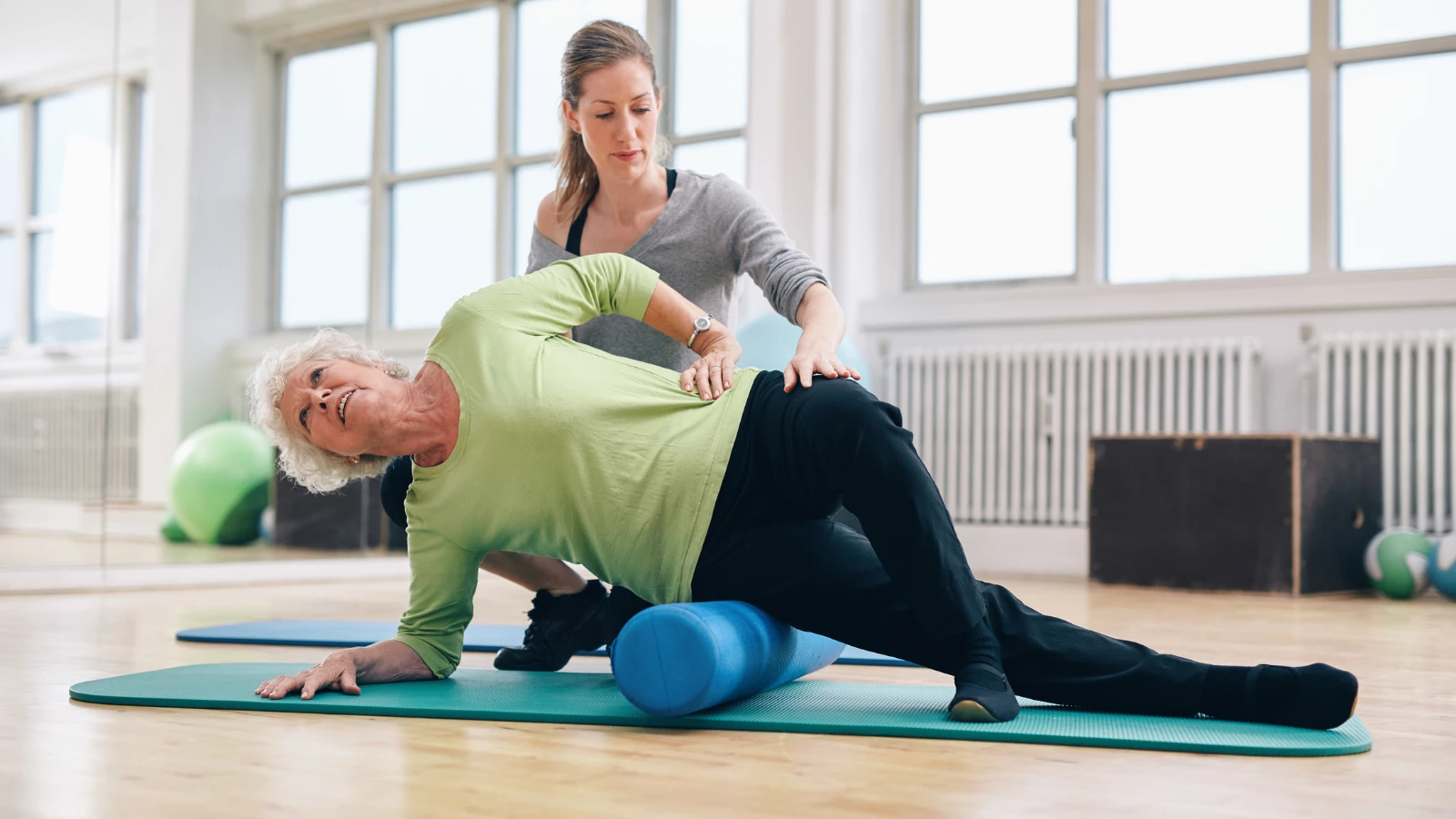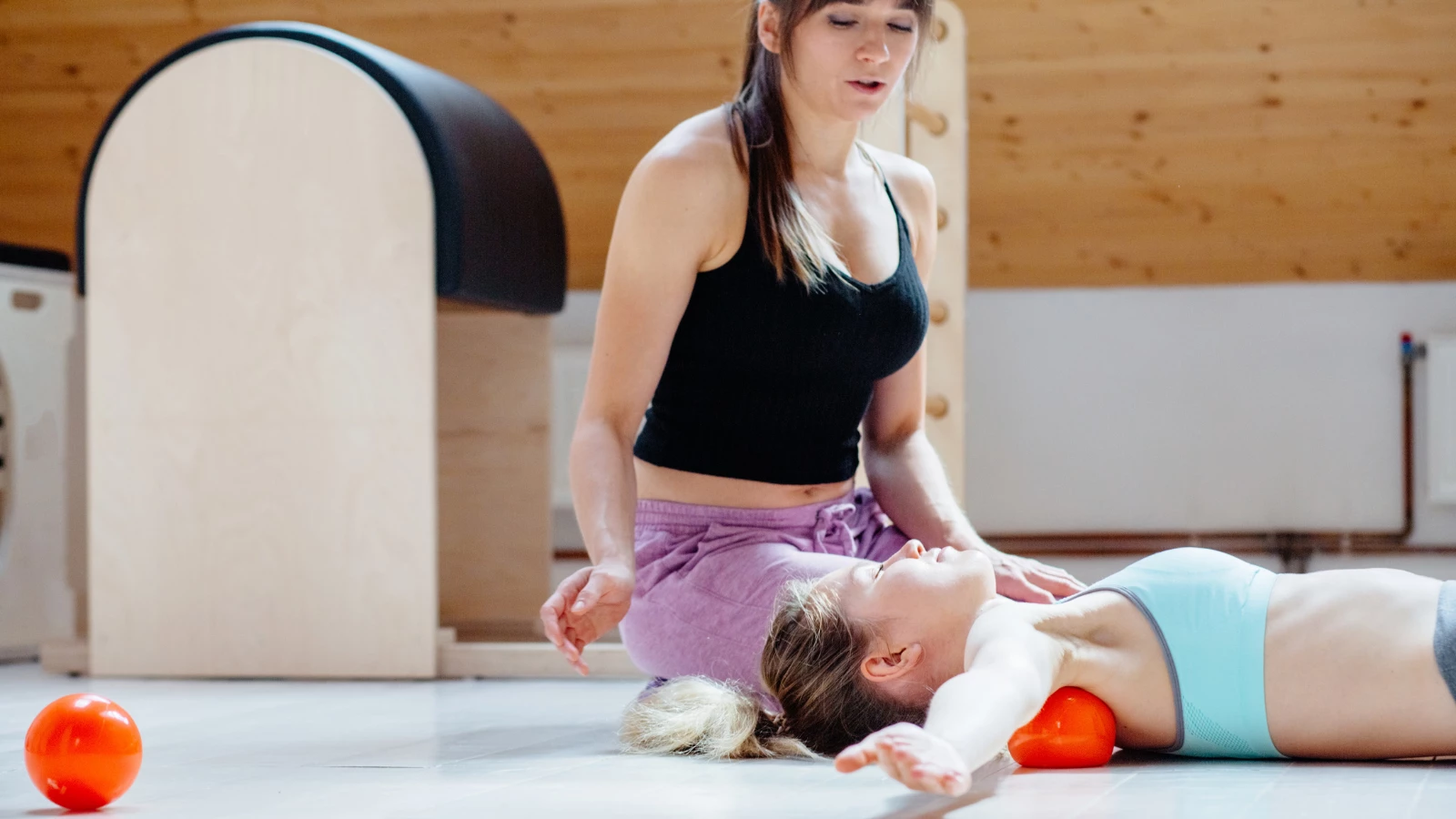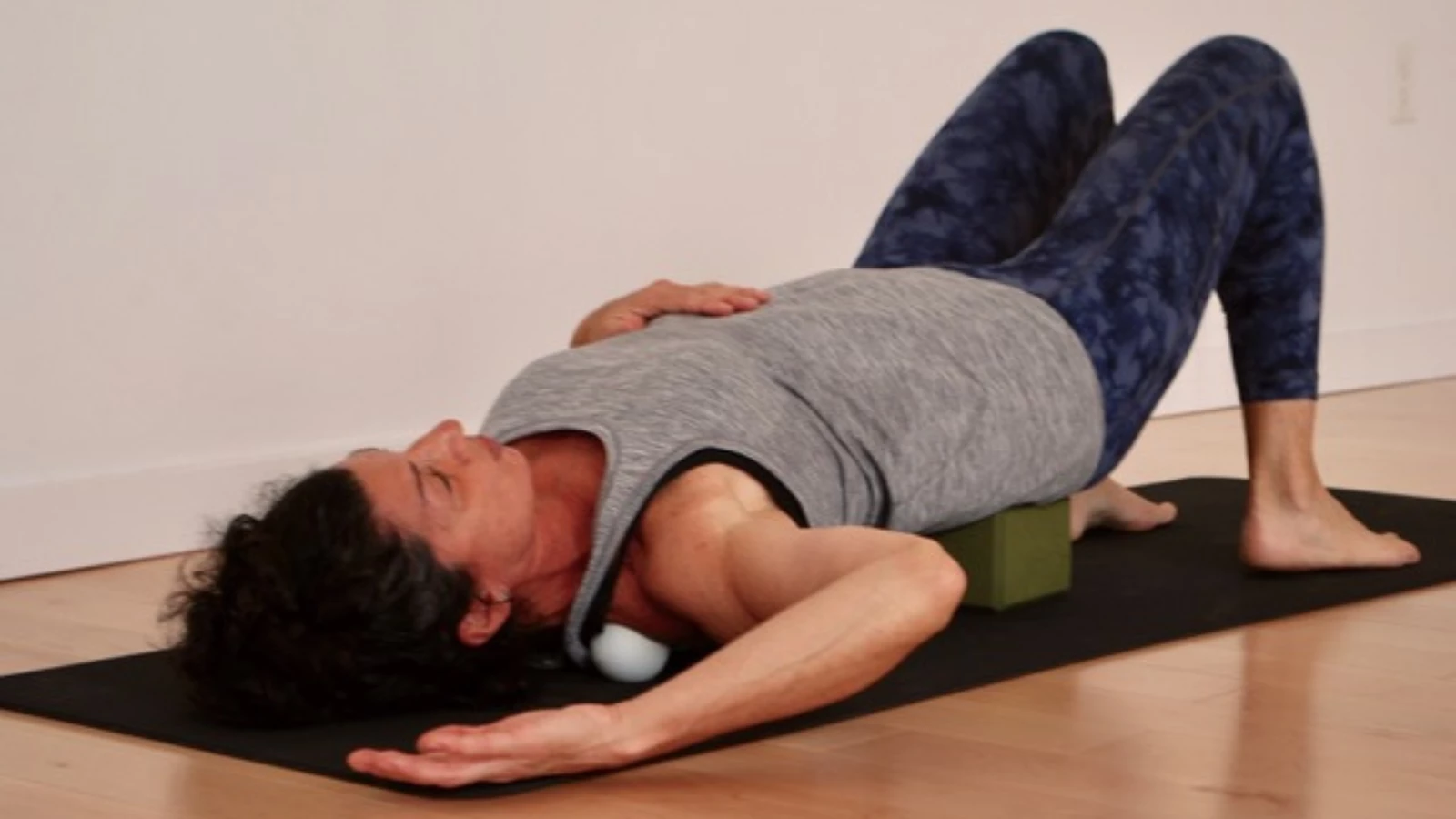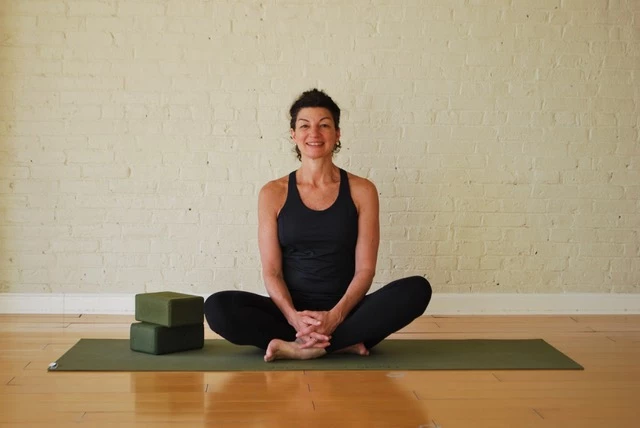Yoga Anatomy: Add Myofascial Release to Your Yoga Classes

Over the past few years, especially in the last year, I’ve spent a good deal of time learning the technique of myofascial release. As a self-proclaimed “anatomy nerd,” it’s right up my alley because it gives me a chance to learn more about the body’s structure and function. Myofascial release (MFR) is the technique of using tools like foam rollers and massage balls (MFR balls), along with other tools, to relieve tension and trigger points in fascia and muscles. These tools and techniques are specific to addressing fascia, the body’s interconnected web of connective tissue. But due to the interconnectedness of connective tissue throughout the whole body, they also address muscles and other related structures.
How Myofascial Release Supports Yoga Practice
In my studies with the National Academy of Sports Medicine, I’ve found that research in their study texts suggest that one of the helpful uses for myofascial release in the course of personal training is that it inhibits overactive muscles. More specifically, the idea of “inhibiting” overactive muscles goes hand in hand with the idea of “decreasing overactivity of neuromyofascial tissue.” (1)
In the context of a personal training program, it’s essential to start with these inhibiting techniques to allow for a better range of motion in the body. Interestingly, after myofascial release, the next phase is “lengthening.” This is because as the body’s nervous system is encouraged to relax through the myofascial release’s effect on muscle receptors that respond to pressure, the muscles are then better primed to be stretched safely. This is where you see the relationship with yoga, as muscle lengthening is integral to yoga practice.
However, most teachers do not prepare students with myofascial release before we lead them through active sequencing, which, of course, includes stretching. It is quite clear from teaching yoga that our students (as well as us as teachers) display many muscle imbalances. A muscle imbalance is a “condition in which there is a lack of balance between certain types of muscles. This tendency seems to be fairly systematic. It seems that certain muscles are prone to shortening (tightness), while other muscles are prone to lengthening and weakness (inhibition). The combination of tight and weak muscles can alter normal movement patterns.” (1)
This is often one of the reasons why, when we try to provide corrective cueing to students in class, they don’t seem to respond. The reality may be that they hear the cue, but their overactive muscles just don’t afford them the required range of motion in the nearby joint or related muscles to create the shape of the pose you’re suggesting. Without this knowledge on the part of the yoga teacher, you’re simply teaching shapes and alignment without the necessary understanding of what is happening both on an anatomical, biomechanical, and nervous system basis.
An article published in Janda V., “Muscles and Motor Control in Low Back Pain: Assessment and Management” (2), provides a list of muscles prone to shortening and lengthening. Some muscles of note that are typically tight or shortened are the gastrocnemius (calf muscle), the adductors (inner thigh muscles), the hamstrings, the psoas, the piriformis (external hip rotator) and erector spinae (muscles of extension of the back).
There are more muscles that tend to be tight or shortened, and there is a whole list of muscles that tend to be overly lengthened, like the serratus anterior, which keeps the shoulder blades connected to the ribcage (really important in Phalakasana (Plank Pose) to Chaturanga Dandasana (Four-Limbed Staff Pose).
Why Does This Matter To Your Yoga Class?

So, why does all this matter? Because in all the examples above of muscles that are typically shortened, we are asking our students to lengthen these muscles in many of the yoga poses offered in typical classes. And we’re doing it without any warm-up (or myofascial release as it were) to inhibit the muscles. In fact, most people would think that starting class slowly and trying to stretch these muscles would be enough, but without the use of myofascial release tools, for many students, their bodies will just fall back into the same patterns of muscle imbalance they live with all day. This is why the actual technique of myofascial release can be so pivotal in helping students get ready to lengthen muscles and strengthen others.
Try It for Yourself
You can try it in your own practice or exercise regimen. Before you go out for a run or step onto the mat to practice, start with some myofascial release. If you’re not sure about how to use the myofascial release tools, you can Google quite a few online videos that will show you some quick techniques. You could search for specific techniques to address some of the typically shortened muscles mentioned above.
Do some rolling and other work on the muscles and related fascia, and then practice or exercise and see if you notice any difference. In fact, notice the sensations you feel when you use the tools. In every single workshop where I’ve taught myofascial release, the reaction of students to using the tools is quite dramatic. It is clear that due to lifestyle and postural habits, we’re all walking around with quite a bit of muscle tension, and until we address it, we sometimes don’t even know it’s there. Or, perhaps we do and we just live with it.
Integrating Myofascial Release into Your Yoga Classes

So, what can you do as a teacher to help your students if you cannot bring myofascial release tools into your classes? (For instance, demonstrating how to roll the plantar fascia at the bottom of the foot, an almost universally tight area for people.) You can share the techniques with any student that asks a related question as a first step. I find that for every question about the body that I get after class, there is always an appropriate suggestion around myofascial release that I can offer. You can also bring techniques around myofascial release into classes by suggesting the tools to your students as part of any cues you give. For example, you can say, “This might be a good pose to do with a myofascial release ball under you, targeting the gluteus maximus,” as in Setu Bandha Sarvangasana (Bridge Pose).
Of course, the best way to integrate myofascial release into your classes is just to do it and bring in the tools. To make that work, you’ll need the support of the studio. You can explain the techniques to them and make sure they’re open to it before introducing the techniques to your students. In your private sessions, bring the tools and use them to educate your students in this important self-care technique. Look for opportunities to learn this technique from teachers and then teach workshops yourself.
Learning the muscles, bones, and joints is no longer enough for a good understanding of anatomy. We must include the study of the fascia. The techniques of myofascial release fall right in line with understanding fascia—how it works and how to keep it healthy.
Reprinted with permission from Bare Bones Yoga.
 Karen Fabian E-RYT, CPT, has a background in rehabilitative medicine and healthcare through her clinical work as a social worker, rehabilitation counselor, and in a variety of health care business settings over a 20-year span. Her passion for anatomy has informed her teaching since she began in 2002, particularly in the classes, workshops, teacher trainings and programs she offers. She earned her CPT, Certified Personal Trainer certification through the National Association of Sports Medicine (NASM) in May 2017, and her Corrective Exercise Certificate through NASM in 2019. (www.barebonesyoga.com).
Karen Fabian E-RYT, CPT, has a background in rehabilitative medicine and healthcare through her clinical work as a social worker, rehabilitation counselor, and in a variety of health care business settings over a 20-year span. Her passion for anatomy has informed her teaching since she began in 2002, particularly in the classes, workshops, teacher trainings and programs she offers. She earned her CPT, Certified Personal Trainer certification through the National Association of Sports Medicine (NASM) in May 2017, and her Corrective Exercise Certificate through NASM in 2019. (www.barebonesyoga.com).
Karen has her B.S. in Rehabilitation Counseling from Boston University and her Master’s in Health Care Administration from Simmons College. She is an Experienced Registered Yoga Teacher, a Yoga Alliance Continuing Education Provider and she trains teachers via her two premier programs, The Blueprint Learning Program, and The Bare Bones Yoga Teacher Mentorship Program.
She lives in Boston.
Resources
1. National Academy of Sports Medicine, Corrective Exercise Training, First Ed. Revised.
2. “Muscles and Motor Control in Low Back Pain: Assessment and Management” in Twomey LT, ed. Physical Therapy of the Low Back, pp.253-278,




